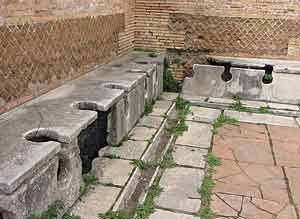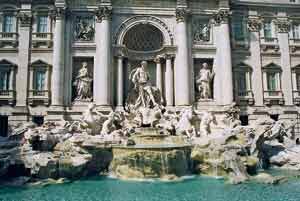Water and Architecture
Alessandro Franceschini
They are two of the protagonists in the history of humanity. One of them appeared after the advent of mankind, the result of the efforts of generations of human beings in their earthly landscape. The other existed before the appearance of human beings and is perhaps the uncontested sovereign of this planet. One of them made shape its essence; the other one is shapeless. The first one is immobile; it tends to defy the centuries in its static way of being. The second one is mobile by nature, iridescent in the way it behaves, even if it always remains the same, in a scornful game of mimesis. One of them rises majestically towards a clear or grey covered sky. The other one falls sinuously or darts into the bowels of mother earth. Sometimes they clash: the first one fears the second one, its corrosive and unhealthy power; the second one detests being channelled, diverted, closed in and limited. Nevertheless, it has also been the case during the centuries which have preceded us that they have searched for each other so that one of them could be the reason for existence or the instrument of beauty of the other.
Architecture and water: two protagonists in the human landscape, since its origin. Even the seven architectural wonders of the ancient world had something to do with water: the Pharos of Alexandria dominated the bay of the largest city which up to that time civilisation had known; the Colossus of Rhodes could be discerned on board far away ships; the statue of Zeus at Olympia reflected its power in a stretch of water constructed within the temple's flooring; lastly, the sloping gardens of Babylon were constructed because of the possibility of providing water even at the top of gardens at a height of twenty two metres.
It was from the Babylonians that the Romans learned to construct with and for water, giving rise to a true 'type' of architecture: the aqueducts. These were high level engineering building works which were extraordinarily elegant in architectural terms and which even today emblazon numerous European landscapes. Water thus became a precious "object", lifted from the force of gravity by architectural forms.
Water architecture and architecture with water reappeared during the Renaissance. Nevertheless something had changed: architecture no longer served water but it was the latter which became a feature of the marble forms and a location of iridescent charm. The following are a few examples: Villa d'Este at Pirro Ligorio, Versailles outside Paris, and Caserta which  has a park in which the road to Naples transforms itself into a river-road. In the subsequent Baroque period luxurious and magnificent material for private individuals became architectural material for everyone, material which could be used to house the entire population. Think of Rome, with Gian Lorenzo Bernini's large fountains which you can see in all the large squares, to that unrepeatable baroque triumph of the meeting of water and architecture represented by the Trevi Fountain.
has a park in which the road to Naples transforms itself into a river-road. In the subsequent Baroque period luxurious and magnificent material for private individuals became architectural material for everyone, material which could be used to house the entire population. Think of Rome, with Gian Lorenzo Bernini's large fountains which you can see in all the large squares, to that unrepeatable baroque triumph of the meeting of water and architecture represented by the Trevi Fountain.
During the 700s and 800s the relationship between water and architecture was re-invented and became the medium through which the modern bourgeois society opened up to the rest of society, towards communication, progress and an exchange of views. This was the architecture of the Age of Enlightenment, which didn't try to limit itself to allowing the use of water in its town squares but tended to make it a real architectural material in urban design. It is no coincidence that this was the case in some of the projects which represent the Age of Enlightenment's European utopia: the project for Saline de Chaux and its subsequent ideal city; the project for the Prato della Valle (lawn of the valley) in Padova; lastly, the aquatic architecture of the Foro Bonaparte in Milan.
What is now left of the iridescent and argumentative relationship between water and architecture? The architecture of the 900s seems to have broken all ties with water; in the cities it has been sent underground, diverted, removed from sight. In buildings -apart from some rare cases- it has been kept hidden between the walls in small pipes, reduced to being a sanitary or alimentary cosmetic feature. In this way, modern architecture has lost a significant part of the poetry which had its origins and strengths in the 'coincidentia oppositorum'. However, it soon needs to recover if it doesn't want to end up completely arid in its metallic glittering, dead in its overall composition.
